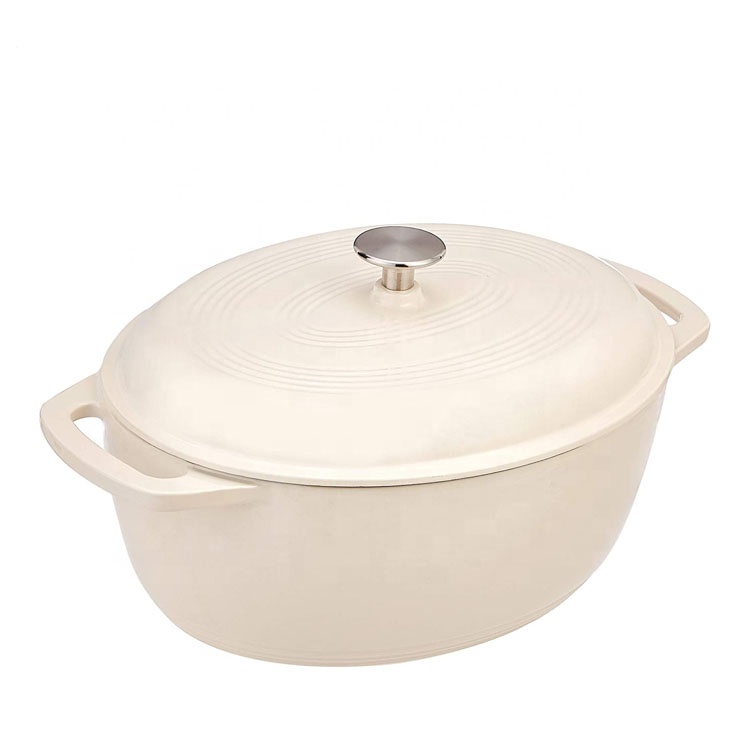
different cast iron pans
Exploring Different Cast Iron Pans A Guide to Choosing the Right One
Cast iron pans have been a staple in kitchens around the world for centuries. Renowned for their heat retention, durability, and versatility, these pans have gained immense popularity among both professional chefs and home cooks. However, not all cast iron pans are created equal. Understanding the differences in various types of cast iron cookware can help you choose the perfect pan for your culinary needs.
Traditional versus Enamel-Coated Cast Iron
One of the most significant distinctions in cast iron cookware is between traditional and enamel-coated options. Traditional cast iron pans, typically seasoned with oil, develop a natural non-stick surface over time. They are ideal for high-heat cooking techniques such as searing, frying, and baking. However, they require regular maintenance, such as seasoning to prevent rusting and food sticking.
On the other hand, enamel-coated cast iron pans offer a non-reactive cooking surface that is easier to clean and maintain. The enamel coating allows for a wider range of cooking methods, including acidic dishes like tomato sauces, which can react poorly with bare cast iron. These pans are available in various colors and can double as serving dishes, adding an aesthetic appeal to the kitchen and dining table.
Size and Shape Considerations
When choosing a cast iron pan, size and shape are crucial factors to consider. Cast iron skillets come in various diameters, usually ranging from 6 to 15 inches. Smaller pans are perfect for individual servings or side dishes, while larger skillets are suitable for family meals or batch cooking.
different cast iron pans

Additionally, the shape of the pan can impact its functionality. For example, a deep skillet with high sides is great for frying and stewing, while a shallow, wide skillet is better for searing and sautéing. Dutch ovens, which are essentially thick-walled cast iron pots with lids, are perfect for slow-cooking, braising, and baking bread.
Specialty Cast Iron Cookware
Apart from traditional skillets and Dutch ovens, the cast iron cookware realm includes many other specialty items. For instance, griddles provide a large, flat cooking surface ideal for pancakes, sandwiches, or even roasting vegetables. Similarly, cornbread skillets come with unique shapes and designs, allowing for delightful presentations, especially during festive occasions.
Moreover, some manufacturers offer dual-purpose pans, such as grill pans with ridges that mimic the effect of grilling, providing beautiful grill marks and allowing excess fat to drain away from food. These specialty pans often come with additional features like pour spouts or removable handles, enhancing their usability.
Conclusion
In conclusion, cast iron pans are an invaluable addition to any kitchen, offering a range of options to suit different cooking styles and preferences. Whether you prefer the traditional ruggedness of seasoned cast iron or the convenience of enamel-coated cookware, there is a cast iron pan for everyone. By considering factors such as size, shape, and specific cooking needs, you can find the perfect cast iron pan to elevate your culinary creations. With proper care and maintenance, a cast iron pan can last a lifetime, making it a worthwhile investment for any home cook.
-
High Quality Kitchen Durable Black Round Cast Iron Cookware - Baixiang County Zhongda Machinery | Non-Stick, Heat Retention, DurableNewsJul.31,2025
-
Large Cast Iron Griddle Pan-Baixiang County Zhongda Machinery Manufacturing Co., Ltd.|Non-Stick, DurableNewsJul.30,2025
-
Cast Iron Cookware - Baixiang County Zhongda | Non-Stick, Durable, Even HeatNewsJul.30,2025
-
Black Round Cast Iron Cookware - Baixiang County Zhongda Machinery Manufacturing Co., Ltd.|Non-Stick&Heat RetentionNewsJul.30,2025
-
Cast Iron Cookware- Baixiang County Zhongda Machinery|Non-Stick, Heat RetentionNewsJul.30,2025
-
High Quality Cast Iron Pancake Pan - Baixiang County Zhongda Machinery Manufacturing Co., Ltd.|Non-Stick, Heat ResistanceNewsJul.30,2025


